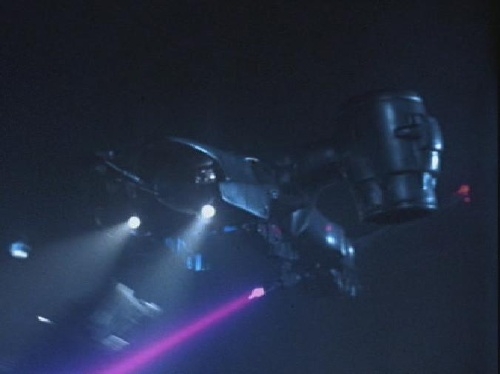
Putting the “Science” in “Science Fiction” – Robotic Drones 1
Besides the terminators that are the series’ namesake, the most well-known robots in the Terminator series are the Aerial Hunter Killers. These flying robots are objects of terror to the human resistance, being able to rain down fire from above. Although these robots are far more advanced than anything currently available, the news is filled with stories about unmanned drone vehicles being used for combat and surveillance. These real-world drones are quite different from their fictional counterparts, because they use less advanced technology and are built to accomplish different missions. Modern aerial combat drones are created to minimize casualties and perform missions that would be difficult for humans, but unlike their fictional counterparts, they are able to operate autonomously and can be remotely controlled by an operator some distance away. In most cases, the drone will travel to its destination under its own guidance, and revert to remote control when it detects a hostile target. Even in cases where drones operate without remote control, modern conventions still require them to receive authorization from a human being before they open fire. This is done to ensure that people are always involved in the decision to attack a target, and that someone can be held accountable for a drone’s actions. The reasons for this can be seen in films like Stealth, where a rogue drone aircraft nearly leads to a war between the United States and Russia.
In military use, drones are generally split up into categories based on the type of environment they operate in. The most common and well-known class of drones are UAVs, or Unmanned Aerial Vehicles. These drones look much like airplanes or helicopters, and include the Global Hawk, Predator and Fire Scout drone, as well as many others. Although combat UAVs like the X47-B are under development, unmanned aircraft are most commonly used for surveillance or reconnaissance work. Most modern UAVs are capable of operating for a day or longer without fuel and do not have to worry about the comfort and biological needs of a pilot. Due to this, UAVs are ideal for patrolling large areas or keeping a constant eye on enemy installations, recording everything they see and alerting their operator whenever something of note occurs. This allows a single operator to keep watch over a very large area without the need for expensive manned aircraft and reduces the risk of pilots being shot down and mistakes being made due to a pilot becoming fatigued or bored.
Although large UAVs are the most commonly known, there are also smaller versions that are used by individual soldiers on the ground. These drones are small and light enough to be carried into battle and launched by hand, then operated by remote control in order to provide the soldier and his squad with better situational awareness.
Besides surveillance duties, drones are sometimes used to attack targets. In these cases, drones avoid placing pilots in harm’s way in high-risk areas. Drones are also used because they are generally small and stealthy, and able to deliver their payload with pinpoint accuracy. These characteristics make them invaluable for catching and destroying targets without inflicting collateral damage. With many modern military actions occurring inside cities, where the risk of accidentally harming civilians or damaging buildings and infrastructure is high, drones are a useful tool for avoiding collateral damage while still completing objectives.
The use of robotic drones in combat is still a touchy subject: many people have strongly opposing views on the subject. The idea of giving machines the ability to kill is an especially difficult question, which is one of the reasons why human operators will always be involved in the decision to carry out attacks. Although the moral and ethical questions about drone use are unlikely to be resolved any time soon, their effectiveness in completing missions while keeping civilian and friendly casualties to a minimum mean that UAVs are likely to become an increasingly common sight on the modern battlefield.












